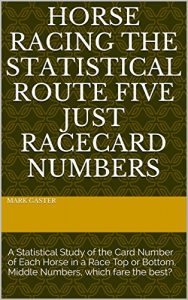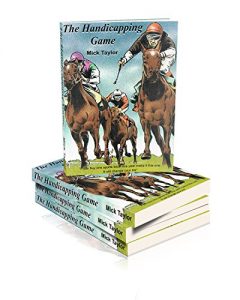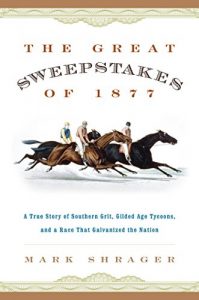I 99eBooks è una directory di eBook. Cerchiamo e classificato intorno alle eBooks Web per te!
Tutti i diritti riservati. I libri e libri elettronici sono di proprietà dei rispettivi proprietari.
Seabiscuit: The Life of the Most Famous Horse in American History (English Edition)
*Includes pictures
*Includes spectator accounts of Seabiscuit's most famous races
*Includes online resources and a bibliography for further reading
*Includes a table of contents
“In 1938... the year's #1 newsmaker was not FDR, Hitler, or Mussolini. Nor was it Lou Gehrig or Clark Gable. The subject of the most newspaper column inches in 1938 wasn't even a person. It was an undersized, crooked-legged racehorse named Seabiscuit.” - Laura Hillenbrand, Seabiscuit: An American Legend
Of all the things that a nation, or even an individual, need to survive a crisis, none is perhaps as necessary as hope. That feeling that somehow one can survive, win even, though the odds are stacked against them and the outlook is grim. Throughout its history, the United States has been blessed, often when most needed, with hope from a strange place. In 1778 it came when the French joined the American Revolution, and in 1980, it was brought home with Olympic Gold by the men’s hockey team. But in the late 1930s, during the midst of the Great Depression, it came in the form of a horse named Seabiscuit.
Americans have always loved animals, and those living prior to World War II were still close enough to their pioneer roots to feel a special affection for horses. After all, it was these noble animals that had carried soldiers and pulled plows and milk wagons alike. A horse was more than just a pet; it was a partner in the fight for survival. Just as many Americans had known special, unforgettable individuals, so they had known special horses.
Seabiscuit was one of these, and even the animal’s name spoke to the heart of those struggling. A sea biscuit was a piece bread baked for so long in such a low oven that it was completely dry and would never mold. It was so tough that it had to be soaked in water, sometimes even rainwater, before it could be eaten. But it was nutritious and would allow a sailor to do his duty for one more hour, helping keep him alive until he reached a safe harbor.
Seabiscuit was in many ways like his cracker namesake, for he was cultivated in many small races until he was ready for the big league. He was also at his best when soaked in the affection and attention given to him by his owners, trainer, and jockeys. Most of all, his wins and even his losses came to nourish a desperate nation and inspire its citizens to keep going until they reached a safer harbor of financial stability. He was also a friend, an inspiring leader who would rank in popularity and respect along with men like Roosevelt and Churchill. It is possible, perhaps even likely, that had he been born in another place and time, his name might never have been known outside of the racing world, but as one Horatio Alger story appealing to a nation full of them, his name became a household word and helped secure him a legacy as perhaps the most famous horse in history.
Seabiscuit: The Life of the Most Famous Horse in American History looks at the life and career of the famous thoroughbred. Along with pictures of important people, places, and events, you will learn about Seabiscuit like never before, in no time at all.
*Includes spectator accounts of Seabiscuit's most famous races
*Includes online resources and a bibliography for further reading
*Includes a table of contents
“In 1938... the year's #1 newsmaker was not FDR, Hitler, or Mussolini. Nor was it Lou Gehrig or Clark Gable. The subject of the most newspaper column inches in 1938 wasn't even a person. It was an undersized, crooked-legged racehorse named Seabiscuit.” - Laura Hillenbrand, Seabiscuit: An American Legend
Of all the things that a nation, or even an individual, need to survive a crisis, none is perhaps as necessary as hope. That feeling that somehow one can survive, win even, though the odds are stacked against them and the outlook is grim. Throughout its history, the United States has been blessed, often when most needed, with hope from a strange place. In 1778 it came when the French joined the American Revolution, and in 1980, it was brought home with Olympic Gold by the men’s hockey team. But in the late 1930s, during the midst of the Great Depression, it came in the form of a horse named Seabiscuit.
Americans have always loved animals, and those living prior to World War II were still close enough to their pioneer roots to feel a special affection for horses. After all, it was these noble animals that had carried soldiers and pulled plows and milk wagons alike. A horse was more than just a pet; it was a partner in the fight for survival. Just as many Americans had known special, unforgettable individuals, so they had known special horses.
Seabiscuit was one of these, and even the animal’s name spoke to the heart of those struggling. A sea biscuit was a piece bread baked for so long in such a low oven that it was completely dry and would never mold. It was so tough that it had to be soaked in water, sometimes even rainwater, before it could be eaten. But it was nutritious and would allow a sailor to do his duty for one more hour, helping keep him alive until he reached a safe harbor.
Seabiscuit was in many ways like his cracker namesake, for he was cultivated in many small races until he was ready for the big league. He was also at his best when soaked in the affection and attention given to him by his owners, trainer, and jockeys. Most of all, his wins and even his losses came to nourish a desperate nation and inspire its citizens to keep going until they reached a safer harbor of financial stability. He was also a friend, an inspiring leader who would rank in popularity and respect along with men like Roosevelt and Churchill. It is possible, perhaps even likely, that had he been born in another place and time, his name might never have been known outside of the racing world, but as one Horatio Alger story appealing to a nation full of them, his name became a household word and helped secure him a legacy as perhaps the most famous horse in history.
Seabiscuit: The Life of the Most Famous Horse in American History looks at the life and career of the famous thoroughbred. Along with pictures of important people, places, and events, you will learn about Seabiscuit like never before, in no time at all.

















